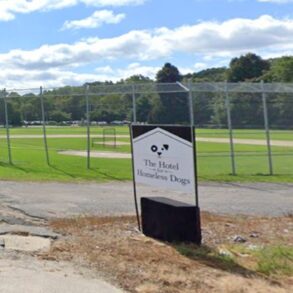
Five words your dog loves hearing
Experts at OnBuy.com surveyed 4,389 pet owners to discover what words and phrases dogs like to hear the most.
unbranded – Lifestyle
In the first week of January, more than 100 dogs were dropped off at the Milwaukee Area Domestic Animal Control Commission. And as of April, the publicly-funded shelter is still operating near capacity.
“We have been full of dogs for almost two years, which is traditionally unheard of in sheltering,” said MADACC Executive Director Karen Sparapani.
That is putting strain on the whole system, said Sparapani, including the need for more foster volunteers.
MADACC often partners with local rescue groups to pair animals with foster homes. But before fostering or adopting a dog, experts say there are a few things to be aware of, especially if you are considering taking in a dog who has behavioral issues.
Here’s what to know:
Multiple factors are causing overcrowded shelters, MADACC says
Sparapani said many overlapping issues have created what she called an “imperfect storm,” including:
- An increase in pit bull-type dogs, which are often overlooked by adopters due to the stigma surrounding the breed, landlord and homeowners insurance restrictions, and behavioral issues from a lack of early training and socialization.
- Private shelters declining to take dogs surrendered by owners, which means difficult cases often end up at animal control facilities, even though MADACC isn’t set up to accept them. “We often find out the dog is chipped to the person who brought it in as a stray,” she said. “There is nothing we can do about that.”
- Puppies and small dogs brought in from out of state attract adopters more than local dogs in need.
- Rising vet costs, which lead some owners to surrender sick or injured dogs in hopes of getting free treatment.
Fostering or adopting a dog is rewarding, but a lot of work
Sparapani said foster volunteers should be aware that taking care of dog is a big responsibility, especially for dogs who may have dangerous behaviors. Training them takes time and consistency.
Sparapani emphasized that there is no magic cure for dogs with behavioral challenges. Animal welfare organizations cannot fix behavioral issues — only a committed owner can do that with time and reinforcement, she said.
“If you are young and still put yourself first, do not get a dog,” Sparapani said.
Foster dogs are not always evaluated for behavioral issues
Madison-based dog behavior consultant Sarah Kalnajs has seen it too often: dogs placed in foster homes without the support they, or their caregivers, need.
Kalnajs said it’s important to be aware that many animal rescue groups do not have trained animal behaviorists on staff. For foster volunteers who take in dogs who have experienced trauma or behavioral challenges, that means they may not get as much support or expertise as they might expect, she said.
Many dogs arrive after traveling for hours, and are quickly placed in homes or adoption events, she said.
“They’re extremely stressed, so they’re kind of shut down,” Kalnajs said. “If the dog had behavior problems, you might not even see them.”
Get help from certified trainers if possible
If you need your dog evaluated or trained, Kalnajs recommends finding a certified professional who uses up-to-date, science-backed methods to observe dogs over time.
Kalnajs recommends trainers who have received certifications from the Certification Council for Professional Dog Trainers or the International Association of Animal Behavior Consultants, which both have searchable online directories.
Kalnajs said foster organizations shouldn’t rely on basic pass-or-fail tests when assessing a dog’s temperament. She referred to a 2016 study published in the Journal of Veterinary Behavior that found these assessments were “no better than flipping a coin” when it came to predicting behavior.
Ideally, she said, dogs would be placed in a foster home for at least two weeks before they can be eligible for adoption.
Wisconsin animal rescue groups are loosely regulated
Foster organizations are a lifeline for overcrowded shelters, but even well-meaning groups can fall short due to a lack of clear rules and regulations, according to Kalnajs.
Wisconsin law requires animal foster groups to be licensed if they take in 25 or more animals per year.
However, there’s no particular standards that are legally required when it comes to evaluating or placing dogs, Kalnajs said.
“If you go get your nails done, the person has to have a license,” she said. “If you go deal with someone who says their dog is trying to bite their child in the face — you could literally do this tomorrow.”
That doesn’t mean volunteers and rescue groups can’t be successful or don’t have their hearts in the right place, she said, but it’s something to be aware of.
How to adopt or foster a pet from MADACC
There are two ways to adopt a dog from MADACC — either in person at the facility, or through a foster-based adoption program.
To adopt a dog from MADACC directly, go in person during adoption hours, which are 11 a.m. to 6 p.m. on weekends and 11 a.m. to 4 p.m. on weekends. You have to complete a profile to help the staff match you with the best dog for your household.
An adoption counselor may ask you to bring any dogs you already own to ensure compatibility.
MADACC dogs can also be transferred to a partner rescue group or humane society for placement. Sites like Petfinder or Adopt-a-Pet contain listings posted by local rescues.
To become a foster parent for MADACC, you can fill out an application online.
Quinn Clark is a Public Investigator reporter for the Milwaukee Journal Sentinel. She can be emailed at QClark@gannett.com.
This post was originally published on this site be sure to check out more of their content.









































